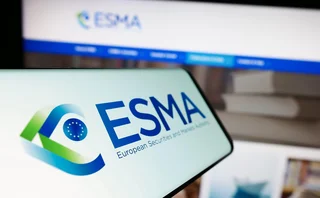
National authorities rebel against BRRD state aid limits
EU single resolution board will “never have any work to do”, lawyers predict

Temporary state aid for struggling banks will need to become a normal feature of resolution toolboxes because the European Bank Recovery and Resolution Directive (BRRD) is not flexible enough, according to numerous national regulators and legal sources.
“Everybody is trying to make sure that if they have a problem in one of their banks, they can somehow argue the bank falls under the Article 32 exception in BRRD. This is something the Monte dei Paschi case made clear,” says one official at a national resolution authority in the banking union.
Such views appear to confirm continued disagreement within the European Union regarding the idea of bailing in the creditors of a distressed bank and what precedent is set by the recent authorisation for the Italian Banca Monte dei Paschi di Siena (MPS) to access state aid.
While some say state aid should only be used in very exceptional circumstances, numerous national resolution authorities and legal experts who spoke with Risk.net say the MPS case shows access to support needs to be a regular tool for struggling banks, rather than an exception. They warn if more flexibility is not built into the BRRD, the framework will lose credibility because it will be too difficult to comply with in practice.
“I think [the MPS case] is a sign everybody somehow reads that the resolution framework is not feasible in real-life cases where big banks are facing problems. I think [the MPS recapitalisation] should make everyone reflect on the ability of applying the resolution framework in a concrete case,” says the resolution official.
Risk.net spoke to experts at national resolution authorities in six countries subject to BRRD, three of which are in the eurozone banking union under the Single Resolution Board (SRB), which is meant to manage a resolution process in those countries. Some say the MPS case should be viewed as an exception, after which European regulators will need to draw a line in the sand on access to state aid. But resolution officials in other countries, together with legal experts, say the BRRD will need to move towards regularising easier access to state support, especially in the form of burden sharing, where state capital injections complement the bail-in of some subordinated creditors.
We are more in the camp of those who think that in a systemic crisis you should be able to use recourse to state aid
Second resolution official at a national resolution authority
“There are indeed divisions on how we should interpret Article 32 and the precautionary recap, and the whole state aid framework, and the capacity to use it in resolution. We are more in the camp of those who think that in a systemic crisis you should be able to use recourse to state aid,” says an official at a second resolution authority in the banking union.
He says the European Commission (EC) drafted the state aid exception in BRRD too strictly, but will be forced to apply it more flexibly to maintain financial stability, which diminishes the credibility of the framework.
“The framework, as it is currently, is not really satisfying because it is a rigid framework, and you see that ex ante in normal times the commission has a very strict approach. But you see the rule can also be applied kind of flexibly, but you don’t know what determines this flexibility and so you never know whether this flexibility will be used or not,” adds the official at a second resolution authority.
MPS is planning to undertake a precautionary recapitalisation under Article 32, which says a bank that is solvent but faces a capital shortfall under an adverse stress-test scenario can benefit from state guarantees for liquidity and newly issued securities, as well as injections of capital at non-advantageous conditions.
The European Central Bank confirmed the eligibility of MPS to apply Article 32 last year, and the bank is now negotiating with the EC for final approval of its plan. According to legal experts, rather than illustrating an exception to the rule, the MPS case shows a welcome path to legally shore up banks without resorting to resolution.
The market never wants to see Elke König
A legal expert in London
“The market never wants to see [SRB head] Elke König. If people carry on doing what I predict they will continue to want to do, which is avoid BRRD and resolution, then König is never going to have any work to do. Only if the situation is so bad that you can’t use the national technique or the state monies are unavailable, then König comes in,” says one legal expert in London.
“The only way forward is this [exception]. The question is political – do [regulators] see it as a hole to be plugged in BRRD or will they leave it for the commission to operate fairly, and trust the commission to do it on the basis it’s the solution the market wants?” he asks.
Resolution authorities and legal experts say these issues could come up in amendments to the BRRD during its review in 2018. They warn that if state aid is not better defined as a normal tool, the MPS case shows how its application could become fragmented.
“My guess is those member states that sincerely believe in the BRRD would probably prefer the creation of a sort of single Europe-wide statutory route to burden sharing, rather than allowing it to develop in a random piece-by-piece way,” says a second legal expert in London. “This is going to be quite interesting, because there is a whole stack of amendments to BRRD, which are about to be placed in front of the European Parliament later this year, and if you wanted to put all this into a hardwired BRRD mechanism, this is the ideal time to do it.”
The main reason why the current BRRD framework is unworkable, say the dissenting resolution authorities, is the requirement that 8% of a bank’s total liabilities must be bailed in before it can access state support. This amount is too high, they say, and could require a bank to eat through to more sensitive liabilities such as deposits. This means European and national resolution authorities will be forced to continually find ways to work around triggering bail-in because of the danger it could pose to financial stability.
This problem is particularly relevant now, because resolution rules entered into force in January 2016, but most banks’ bail-in buffers – called the minimum requirement for own funds and eligible liabilities (MREL) for non-systemic banks – have yet to be defined. MREL will be phased in until 2020, so banks might not have the required liabilities in place for a bail-in before that date.
The BRRD doesn’t deal with the fact there is no limitation on whether or not you can place MREL-eligible liabilities in your retail customer base
First resolution official at a national resolution authority
“At one stage [we] pleaded for a BRRD holiday. It would have made the whole framework more credible,” says the second resolution official. “So there is no MREL requirement, but on the other hand, if you want to open the door for state aid, you have to apply the 8% bail-in. So the situation we are in is very uncomfortable, especially if you believe deposits should not be bailed in.”
Even after bail-in buffers are complete, it is unclear if the framework, as currently drafted, could function smoothly. The strict writing of the rules makes it difficult for some banks to provide comfort to sensitive clients that would not be hurt by bail-in. This could jeopardise depositor and market confidence in the individual firm, and potentially the whole national banking system, warn resolution authorities.
Authorities say they doubt whether some – especially deposit-funded – banks have the ability to raise buffers of subordinated debt high enough to cope with the 8% bail-in requirement in order to keep sensitive investors and depositors safe. They also say it might not be possible to ensure no subordinated debt is held by retail investors – one of the key sticking points in the Italian bank recapitalisation process. Eliminating retail investors could make raising MREL even more challenging for banks in certain jurisdictions.
“The BRRD doesn’t deal with the fact there is no limitation on whether or not you can place MREL-eligible liabilities in your retail customer base. You could say, ‘look, you signed this declaration saying [you understand]’, but then a client might say it was misselling. And if it’s 300,000 people, it becomes a political interest, and it is very difficult for a political leader to ignore,” says the first resolution official.
Only users who have a paid subscription or are part of a corporate subscription are able to print or copy content.
To access these options, along with all other subscription benefits, please contact info@risk.net or view our subscription options here: http://subscriptions.risk.net/subscribe
You are currently unable to print this content. Please contact info@risk.net to find out more.
You are currently unable to copy this content. Please contact info@risk.net to find out more.
Copyright Infopro Digital Limited. All rights reserved.
As outlined in our terms and conditions, https://www.infopro-digital.com/terms-and-conditions/subscriptions/ (point 2.4), printing is limited to a single copy.
If you would like to purchase additional rights please email info@risk.net
Copyright Infopro Digital Limited. All rights reserved.
You may share this content using our article tools. As outlined in our terms and conditions, https://www.infopro-digital.com/terms-and-conditions/subscriptions/ (clause 2.4), an Authorised User may only make one copy of the materials for their own personal use. You must also comply with the restrictions in clause 2.5.
If you would like to purchase additional rights please email info@risk.net
More on Regulation
Will Iosco’s guidance solve pre-hedging puzzle?
Buy-siders doubt consent requirement will remove long-standing concerns
Responsible AI is about payoffs as much as principles
How one firm cut loan processing times and improved fraud detection without compromising on governance
Could one-off loan losses at US regional banks become systemic?
Investors bet Zions, Western Alliance are isolated problems, but credit risk managers are nervous
SEC poised to approve expansion of CME-FICC cross-margining
Agency’s new division heads moving swiftly on applications related to US Treasury clearing
ECB bank supervisors want top-down stress test that bites
Proposal would simplify capital structure with something similar to US stress capital buffer
Clearing houses warn Esma margin rules will stifle innovation
Changes in model confidence levels could still trip supervisory threshold even after relaxation in final RTS
BlackRock, Citadel Securities, Nasdaq mull tokenised equities’ impact on regulations
An SEC panel recently debated the ramifications of a future with tokenised equities
CCPs trade blows over EU’s new open access push
Cboe Clear wants more interoperability; Euronext says ‘not with us’







